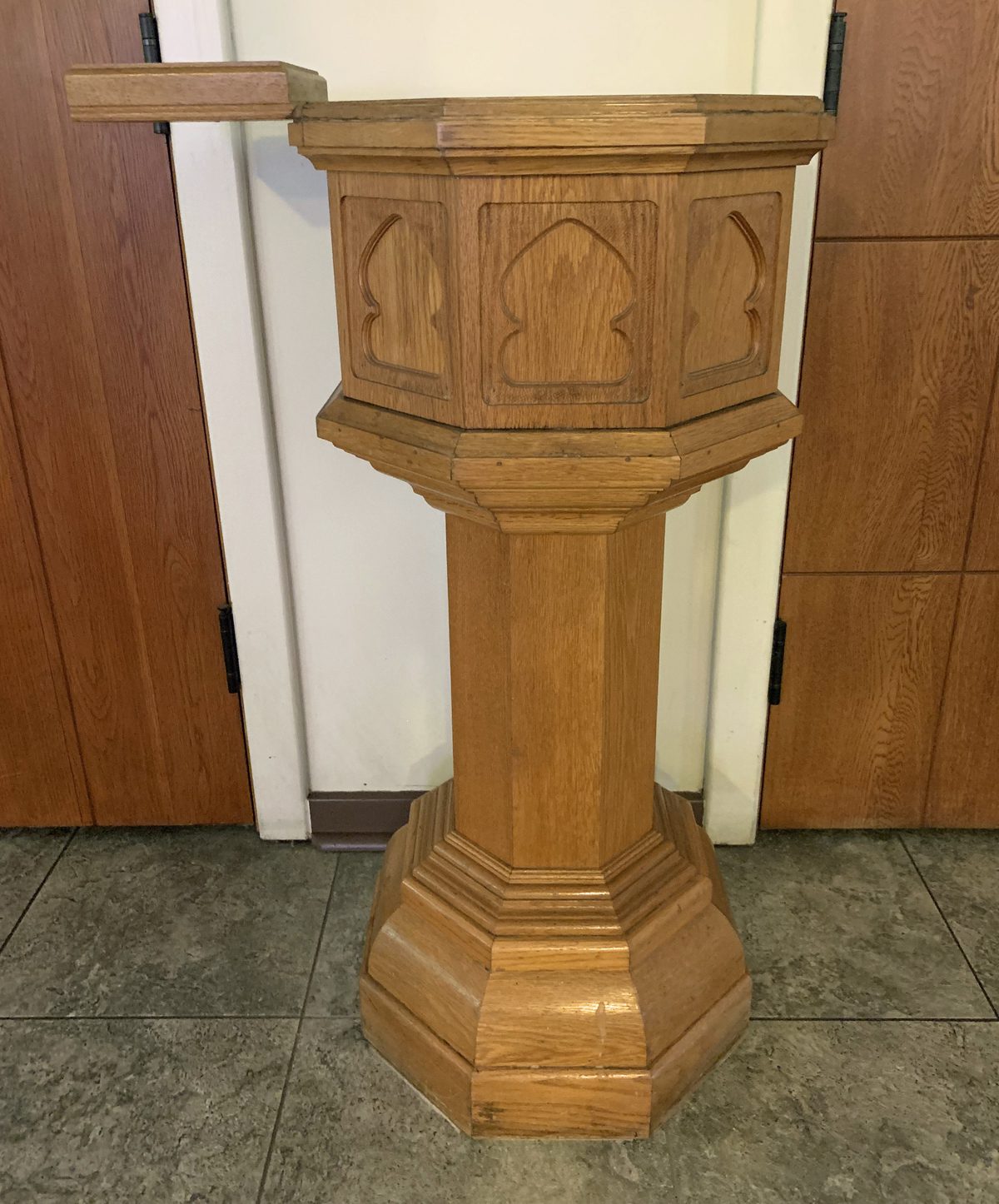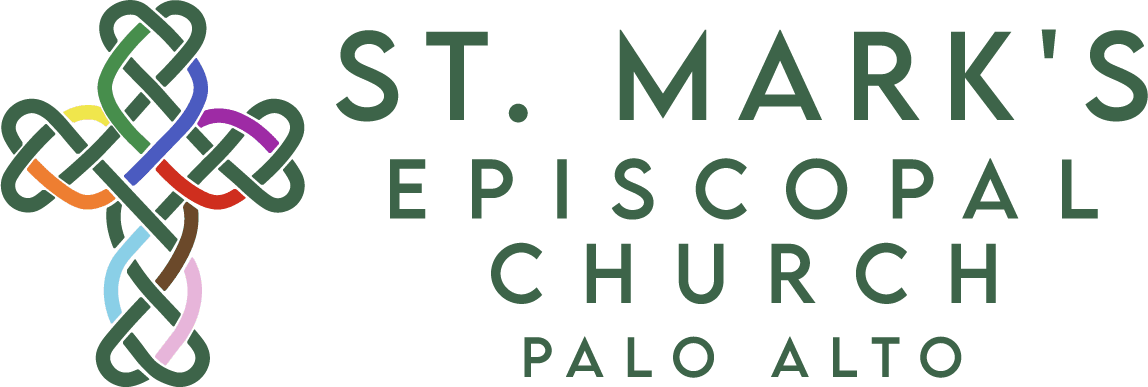The font in the Saint Mark’s Chapel was given in memory of a man who was exceedingly well known nationwide in his time, but is likely not remembered by anyone in our congregation today. The font was given in memory of Tasker Lowdnes Oddie by his sister, Anna Oddie Siebert. Tasker was not a member of St. Mark’s, but Anna was. Tasker passed away in February of 1950. The memorial in our records reads as follows:
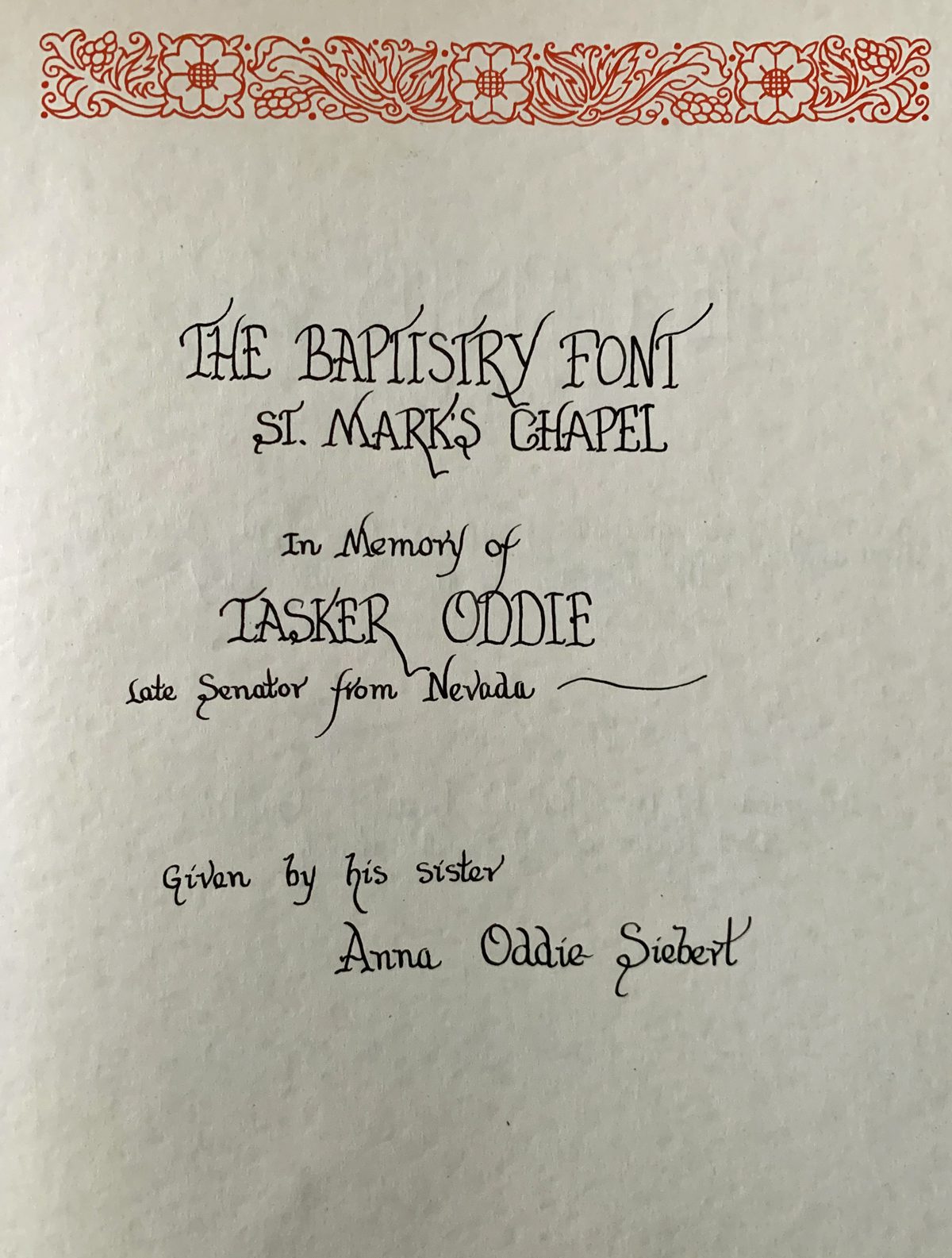
Tasker Lowdnes Oddie was born October 20, 1870 in Brooklyn, New York. He was raised in East Orange, New Jersey and attended public schools there (Tasker’s father was a banker) (Biographical Directory of United States Congress). When he was 16, Tasker “moved west to a Nebraska ranch for his health.” When he was 19, he returned to New York, studied law at night, graduated from the law school at New York University in 1895, and worked at a real estate office during the day (The Capital Journal).
In 1898, Tasker moved west and settled in Austin, Nevada to work as a mining engineer (Biographical Directory of the United States Congress). Although he was interested in agricultural and livestock pursuits, his real success came as a prospector. As a result of “grubstaking a prospector,” Oddie became one of four people to “file the original group claims in the rich Tonopah gold and silver fields” (The Capital Journal). He made his fortune as the manager of the Tonopah Mining Company.
Next Tasker launched his political career. First he was elected District Attorney for Nye County, Nevada from 1901-1902. From 1903-1906 he was elected to the Nevada State Senate. From 1911-1915 he was Governor of Nevada. During Oddie’s tenure as governor, he:
- Oversaw the enfranchisement of women in 1914
- Established the first state motor vehicle laws in Nevada
- Worked to establish mine safety legislation
- Improved worker’s compensation benefits in Nevada
In 1920 he was elected to represent Nevada in Congress, and served as a Republican United States Senator from 1921-1933 (Biographical Directory of the United States Congress). While serving as a Senator, Oddie was the Chairman of the Committe on Mines and Mining and served on the Committee on Post Office and Post Roads (Biographical Directory of the United States Congress).
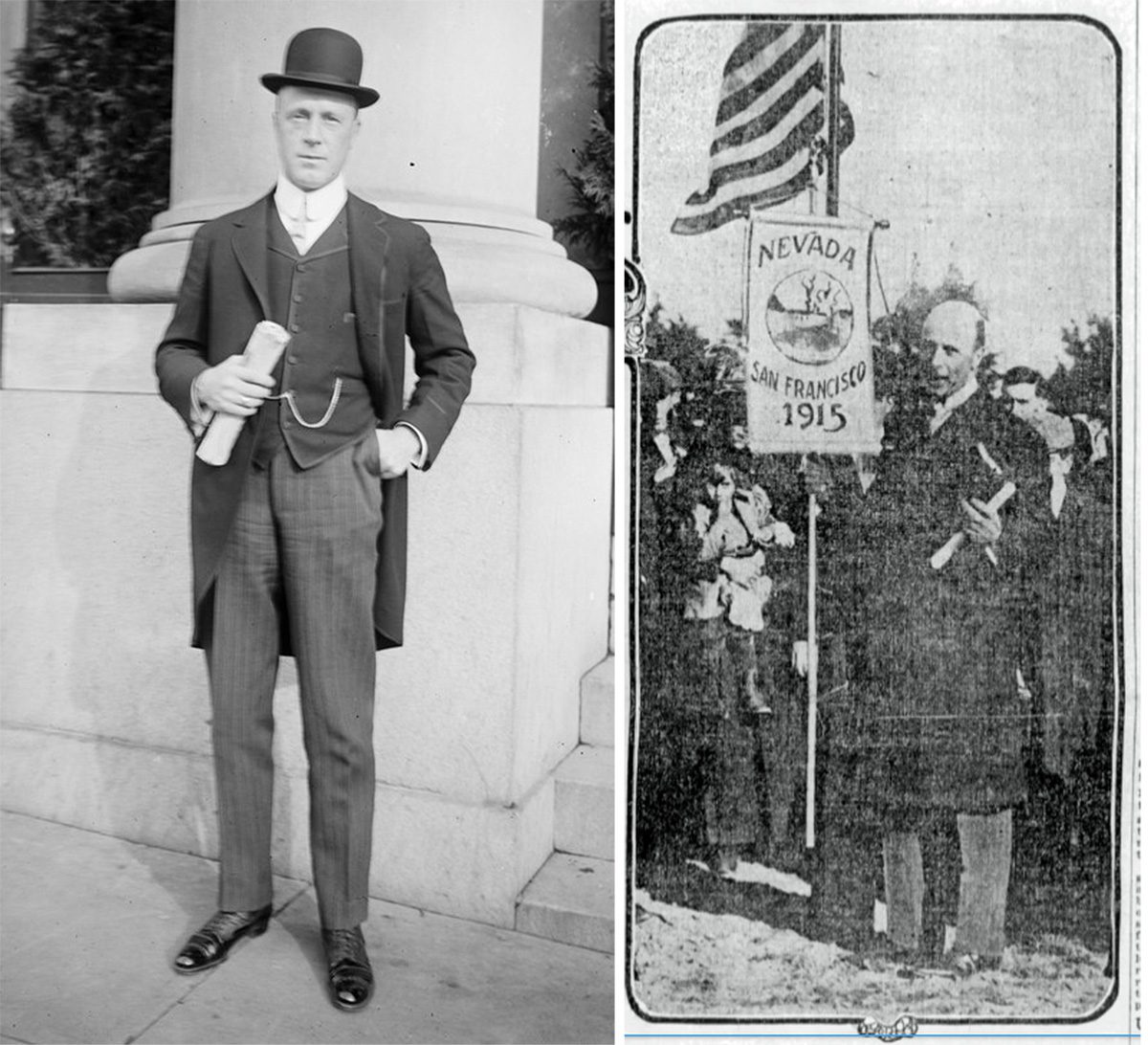
One famous vote Tasker made while in Congress had big implications for the San Francisco Bay Area. In the late 1920’s, a group of California businessmen, along with state senator Hiram Johnson, were lobbying for a preferred location for the planned Bay Bridge – the group wanted the bridge to start at Hunter’s Point. Since the Army and Navy were involved in construction of the bridge and its location, Congress, in particular the United States Senate, had to vote to approve the site. It’s a long, complicated story, but suffice it to say that Tasker Oddie’s unexpected “No” vote on the bill resulted in various negotiations that ended in the current location of the bridge and foiled the plans of Johnson and his group of investors (The Oakland Tribune).
Tasker Oddie’s senate career ended during the Great Depression in the Democratic landslide of 1932 (The Capital Journal). He returned to business and Tasker and Tasker Tasker and his wife, Daisy, often spent summers in San Francisco and winters in Nevada.
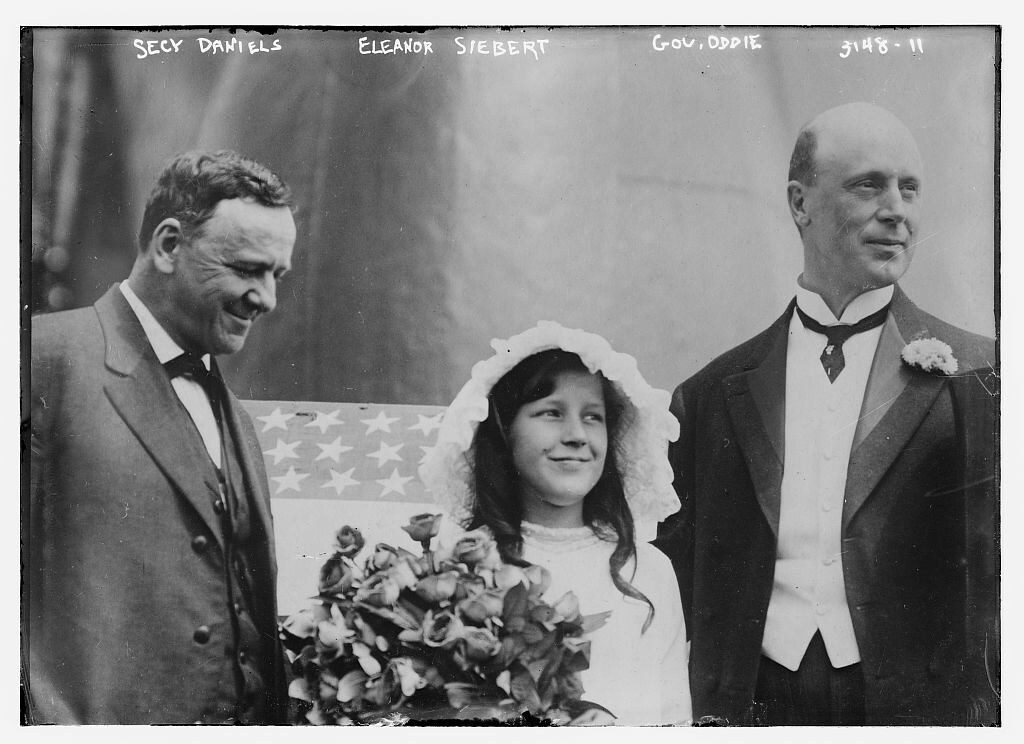
It was in 1902 that Taskers sister, Anna, met and married Frederick John Siebert, a Nevada mining engineer. By 1936, Frederick and Anna had moved to Palo Alto. Federick died that year. In 1940, Anna was running a business called the “Sleep Safe.” She was apparently the inventor of “baby sleep safe, a device for keeping babies on their backs,” which she manufactured and sold for several years before selling her patent rights (Nevada State Journal). She was an early member of St. Mark’s and so, coming full circle, donated the font in memory of her brother in 1950. A group of Anna’s friends later gave an Organ Hymnal to St. Mark’s in memory of Anna.
